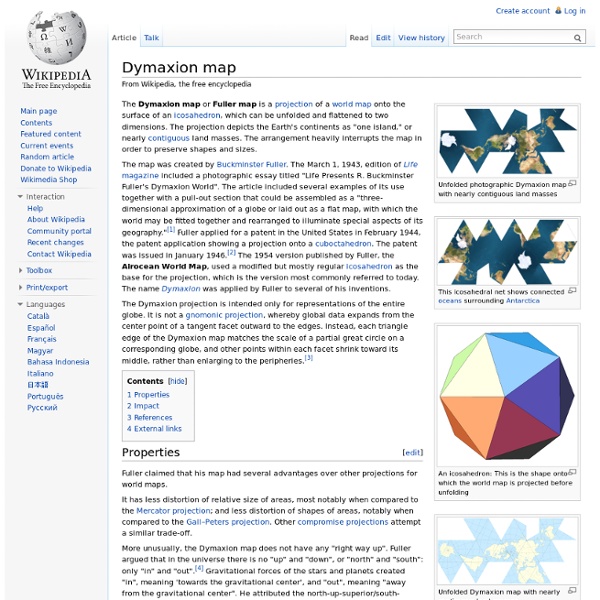Dymaxion map

Critical Path (book)
Critical Path is a book written by US author and inventor R. Buckminster Fuller with the assistance of Kiyoshi Kuromiya. First published in 1981, it is alongside Operating Manual for Spaceship Earth one of Fuller's best-known works. Vast in its scope, it describes Fuller's own vision of the development of human civilization, economic history, and his highly original economic ideology based, amongst other things, on his detailed description of why scarcity of resources need no longer be a decisive factor in global politics. The following is a list of the main claims and opinions presented in the book, reported without discussion or criticism. The first part of the book explains the history and present state of the global economy. Human life began in the atolls of the South Pacific, where the average sea temperature is closest to that of the human body (p. 6). Our knowledge of the spherical shape of the Earth is central to our understanding of ecology (p. 34). Critical path. Mr.
Wind Map
An invisible, ancient source of energy surrounds us—energy that powered the first explorations of the world, and that may be a key to the future. This map shows you the delicate tracery of wind flowing over the US. The wind map is a personal art project, not associated with any company. We've done our best to make this as accurate as possible, but can't make any guarantees about the correctness of the data or our software. Please do not use the map or its data to fly a plane, sail a boat, or fight wildfires :-) If the map is missing or seems slow, we recommend the latest Chrome browser. Surface wind data comes from the National Digital Forecast Database. If you're looking for a weather map, or just want more detail on the weather today, see these more traditional maps of temperature and wind.
Related:
Related:



